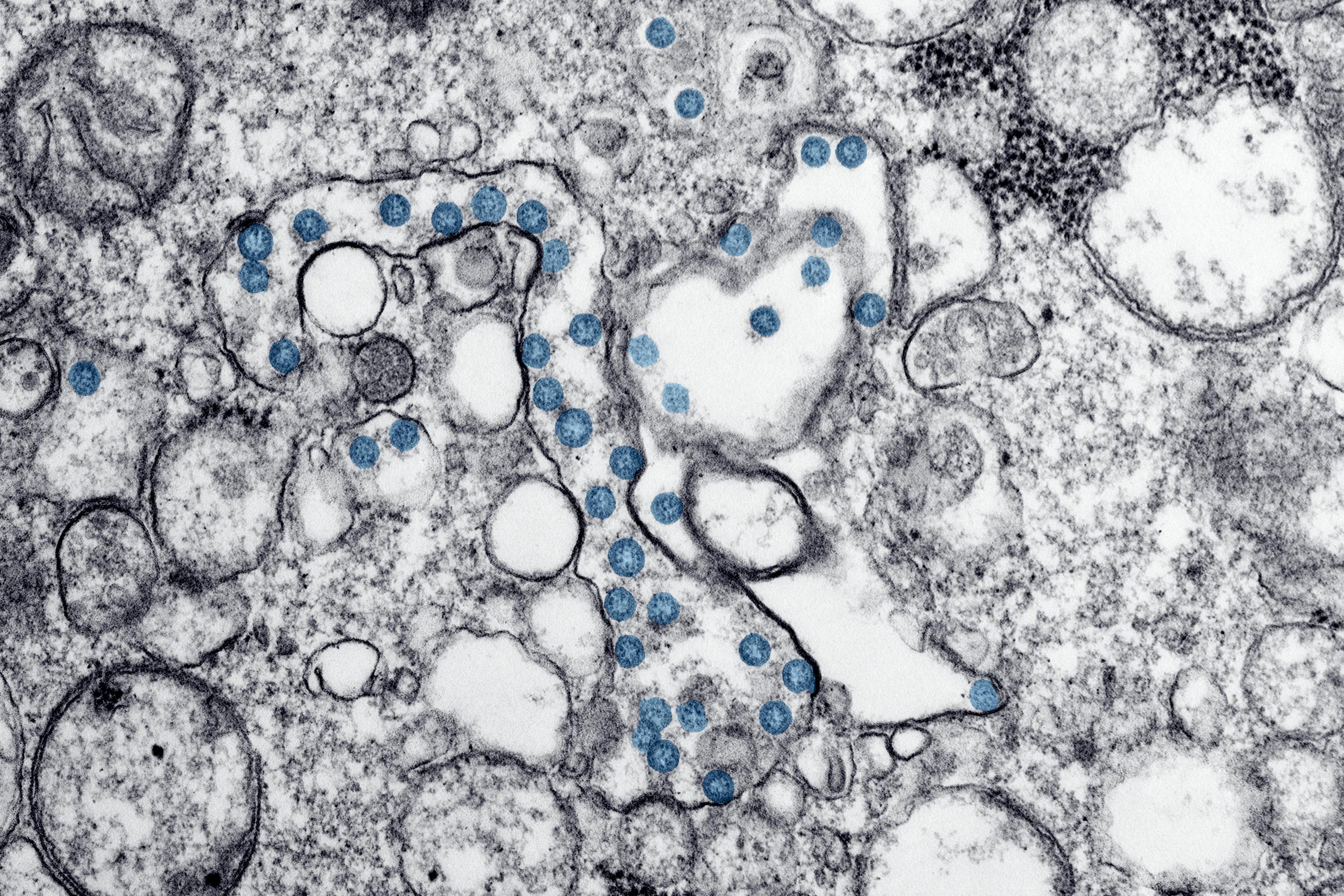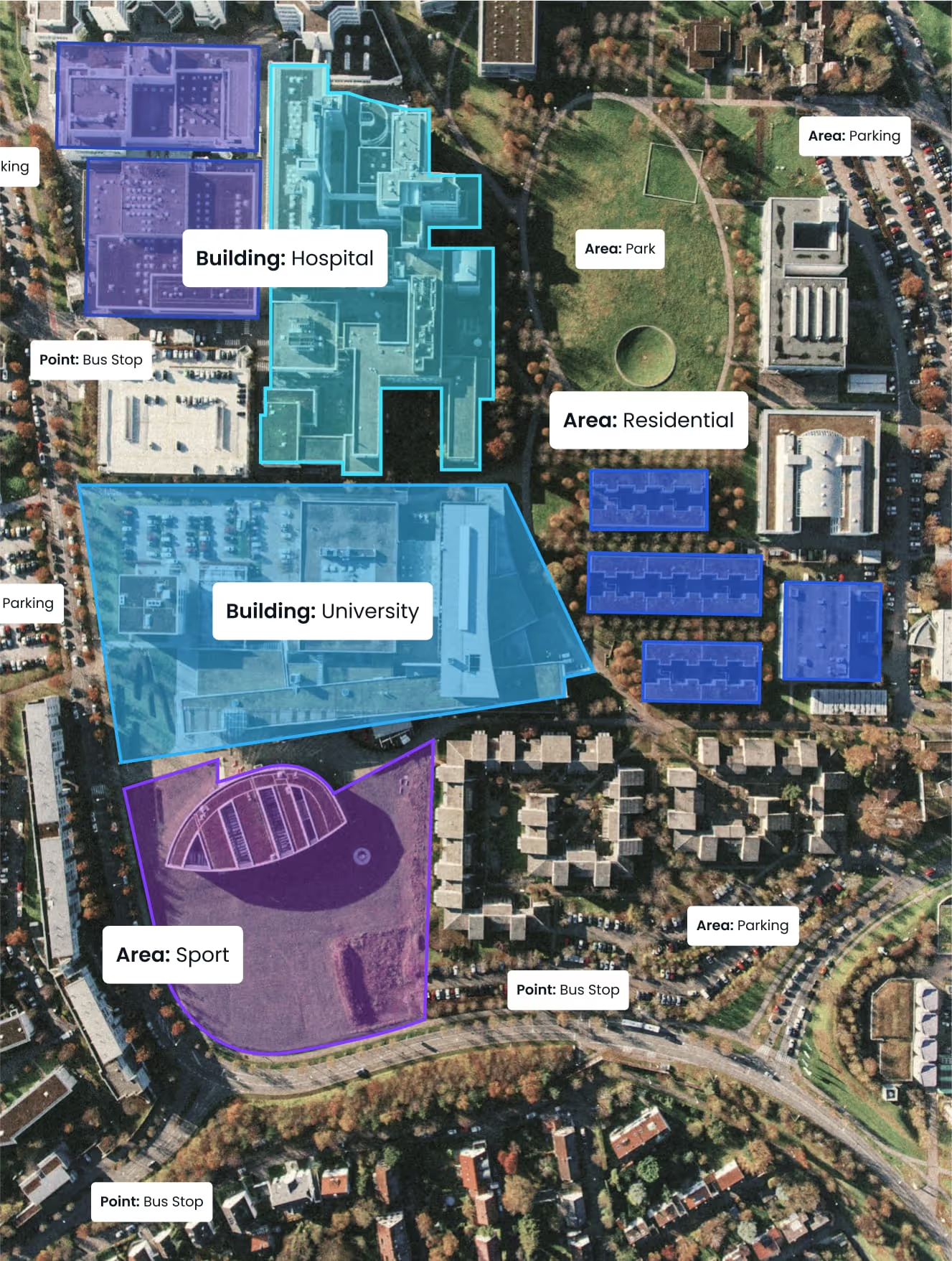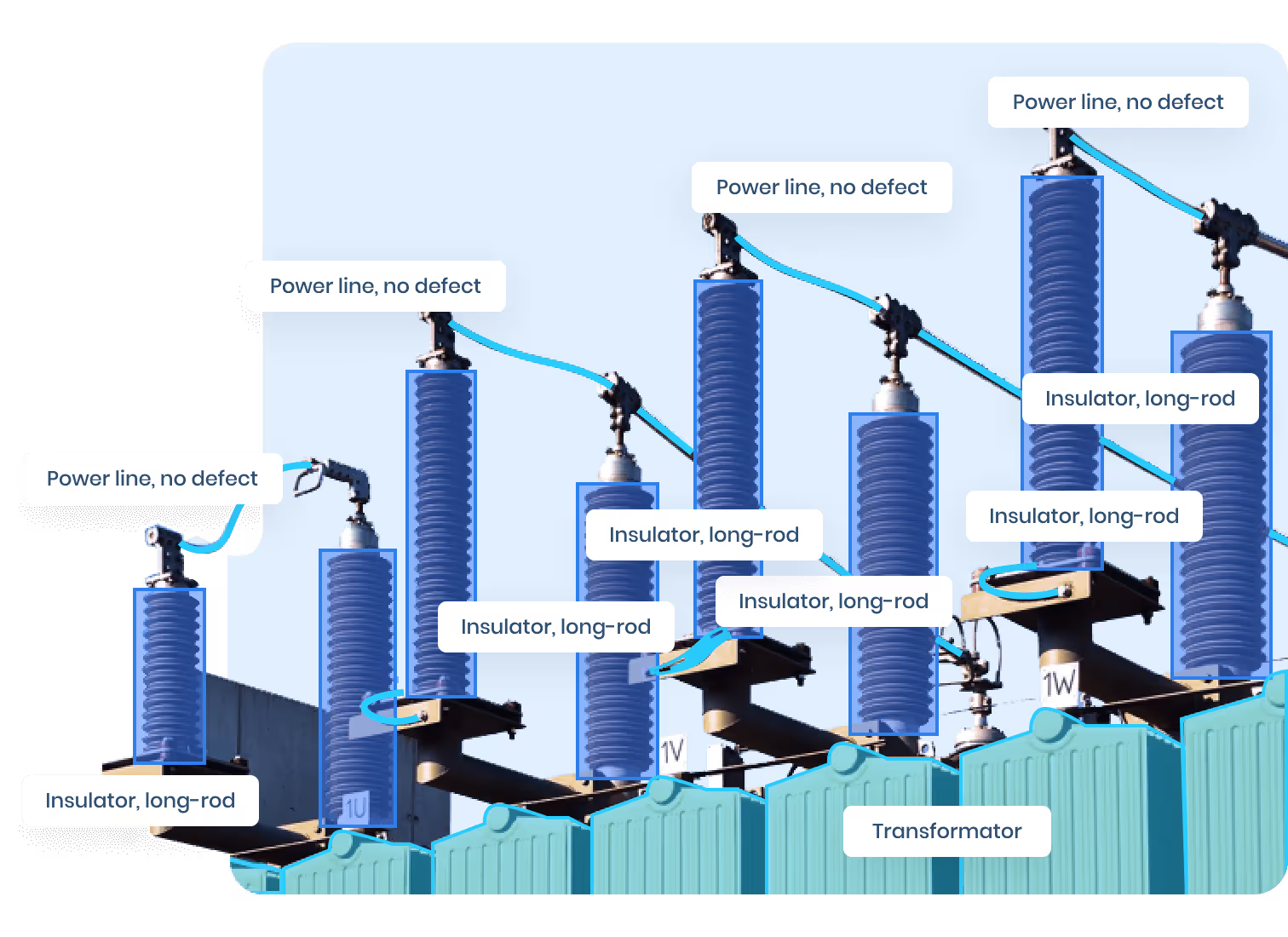Introduction: Why Multi-Class Tumor Segmentation Is Critical to Healthcare
In recent years, artificial intelligence (AI) has surged as a transformative force in oncology, enabling earlier cancer detection, faster diagnosis, and more personalized treatment. At the core of these advancements lies one essential task: tumor segmentation.
But real-world medical data is complex. Tumors rarely exist in isolation. A single scan may contain multiple tumor types, grades, shapes, and tissue structures—all demanding multi-class segmentation for accurate modeling.
Unlike binary segmentation, which classifies pixels as tumor or non-tumor, multi-class tumor segmentation breaks down various tumor subregions, such as:
- Tumor core
- Necrotic area
- Edema
- Infiltrating margin
- Cystic components
- Specific tumor subtypes (e.g., glioblastoma vs. oligodendroglioma)
This article serves as a complete guide to navigating the challenges, annotation workflows, tools, and AI strategies for multi-class tumor segmentation. Whether you're building a clinical model or annotating WSIs in pathology, this content will help you design scalable, accurate workflows that meet real-world needs.
1. What Is Multi-Class Tumor Segmentation?
💡 Definition
Multi-class tumor segmentation is the process of labeling multiple tumor-related regions in a medical image—each with a distinct class label. Instead of producing a single binary mask, the AI model outputs a separate class for each region.
For example, a segmented brain MRI might include:
- Class 0: Background
- Class 1: Tumor-enhancing core
- Class 2: Edema
- Class 3: Necrotic tissue
🧠 Why It’s Important
- Provides a granular understanding of tumor structure
- Enables volume-based treatment planning (e.g., radiation targeting)
- Supports tumor grading and progression monitoring
- Useful in multi-modal imaging (CT, MRI, PET) where different components respond differently
📚 Learn how multi-class segmentation enabled brain tumor monitoring in the BraTS Challenge
2. Imaging Modalities Used in Multi-Class Segmentation
Multi-class tumor segmentation spans across multiple imaging types:
🧠 MRI (Magnetic Resonance Imaging)
Common for soft-tissue tumors (e.g., gliomas, prostate cancer). Different sequences (T1, T2, FLAIR) reveal tumor subregions.
🩻 CT (Computed Tomography)
Used for lung, liver, and colorectal tumors. Less contrast than MRI but widely accessible.
🧫 Histopathology (WSIs)
Used in breast, skin, and prostate cancers. Enables high-resolution segmentation of cell-level tumor components.
🔬 PET-CT / PET-MRI
Adds metabolic information, crucial for defining active tumor regions (e.g., FDG uptake in lymphoma).
🧾 For an open-source MRI dataset with multi-class tumor segmentation, explore BraTS 2021
3. Common Challenges in Multi-Class Tumor Segmentation
Despite its power, multi-class segmentation presents several technical, medical, and operational challenges:
⚠️ 3.1. Class Imbalance
Tumor classes such as necrosis may occupy <5% of the image volume, while edema may dominate. This imbalance can skew learning.
Solution: Use loss functions like Dice loss or Focal loss to give more weight to underrepresented classes.
🧩 3.2. Visual Similarity Between Classes
Subregions like edema and non-enhancing tumor can appear nearly identical, especially in low-resolution scans.
Solution: Annotate using multiple imaging modalities or sequences (e.g., T2 for edema, T1-Gd for enhancement).
🩸 3.3. Annotation Ambiguity
Even experienced radiologists and pathologists may disagree on where one class ends and another begins.
Solution: Build a QA loop with adjudication, or compute inter-annotator agreement (e.g., Cohen’s Kappa).
🧠 3.4. Multi-Modality Alignment
MRI, CT, and PET may be misaligned, leading to class mismatch across images.
Solution: Use registration tools like ANTs or ITK to align modalities before annotation.
🖼️ 3.5. Data Volume and Processing
Gigapixel pathology slides and large volumetric scans require tiling, patch extraction, and hardware acceleration.
Solution: Use tile-based annotation platforms and hybrid CPU/GPU pipelines.
📚 This MIT paper discusses class imbalance in tumor segmentation and how synthetic augmentation helps.
4. Annotation Strategies for Multi-Class Tumor Segmentation
Precision begins with labeling. Here's how experts approach complex, multi-class tumor annotation:
🖊️ 4.1. Polygonal Annotation
Used when outlining irregular tumor shapes—especially helpful for histology or dermatopathology images.
- Ideal for non-rectangular tumor boundaries
- Labor-intensive but highly accurate
- Supported by tools like QuPath, Aiforia, and Labelbox
🟪 4.2. Semantic Segmentation (Pixel-wise Masks)
Each pixel is labeled with a class, making this method ideal for training CNNs on volumetric data.
- Common in MRI and CT slices
- Usually done using semi-automated workflows
- Mask arrays stored in formats like
.npy,.png, or DICOM-SEG
🧩 4.3. 3D Volumetric Segmentation
Especially relevant for brain, liver, and lung cancers. Annotators work across slices to maintain class consistency in 3D space.
- Enables accurate tumor volume estimation
- Used in platforms like ITK-SNAP or 3D Slicer
- Exported in NIfTI or DICOM format
📍 4.4. Instance Segmentation
Each tumor region is segmented and labeled separately—even if it's the same class. Crucial for distinguishing between multifocal tumors.
🔁 4.5. Model-in-the-Loop Annotation
AI provides initial segmentations, which are corrected by humans. Ideal for speeding up large multi-class datasets.
- Feedback loop enhances future predictions
- Used in tools like Encord Active or Supervisely Auto-Labeling
- Reduces time by up to 60% in complex datasets
📘 Read this DeepMind case study on model-in-loop annotation in breast cancer AI.
5. Tools and Platforms Supporting Multi-Class Tumor Labeling
Here are battle-tested tools that support multi-class segmentation workflows across medical imaging types:
💻 Tool Examples:
- 3D Slicer – Open-source; ideal for 3D MRI/CT tumor annotation
- ITK-SNAP – Intuitive GUI for 3D medical image segmentation
- QuPath – WSI-focused, used in histopathology
- Labelbox / Encord – Enterprise-grade with AI-assisted labeling
- MONAI Label – Real-time AI model-in-the-loop annotation
🔗 For DICOM-native tools, see the OHIF Viewer used in research hospitals worldwide.
6. AI Model Architectures for Multi-Class Tumor Segmentation
To perform multi-class segmentation, you'll need models capable of multi-label output. Here are some popular architectures:
🔬 6.1. U-Net and Variants
- U-Net, Attention U-Net, U-Net++
- Great for biomedical segmentation (2D and 3D)
🧠 6.2. DeepLabV3+
- Uses atrous convolutions for multi-scale segmentation
- Performs well on multi-class tissue prediction
🧬 6.3. nnU-Net
- Self-configuring framework; was a top performer in BraTS and KiTS competitions
- Excellent for brain and kidney tumor segmentation
📦 6.4. Transformers for Segmentation
- Models like SegFormer or TransUNet offer long-range dependencies
- Useful in histopathology where fine-grained texture matters
🧪 Check out MONAI for PyTorch-based tumor segmentation pipelines.
7. Clinical and Research Use Cases
🧠 7.1. Brain Tumor (Glioma, GBM)
- Segmentation of core, edema, necrosis
- Tracks tumor progression over time
- Used in BraTS, FeTS competitions
🩺 7.2. Prostate Cancer
- Multi-class Gleason grading
- Core vs. periphery segmentation
- Used in AI-powered pathology tools
🫁 7.3. Lung Cancer
- Differentiates solid, semi-solid, and ground-glass opacities
- Tracks response to targeted therapies
🧫 7.4. Breast Cancer
- IDC vs. DCIS classification
- Tumor vs. stroma vs. immune segmentation
- Crucial for HER2 and ER testing workflows
🔬 7.5. Liver and Pancreatic Tumors
- Multi-phase CT segmentation
- Portal venous vs. arterial phase analysis
📖 TCGA and TCIA are excellent sources of annotated multi-class tumor data.
8. Quality Assurance and Compliance Considerations
- Use consensus annotation from multiple specialists
- Track inter-annotator agreement (Cohen’s Kappa, Dice score)
- Ensure anonymization per HIPAA guidelines
- Follow GDPR for any EU-based patient imaging
✅ Build automated QA checks into your pipeline to reduce manual review errors.
9. Trends & The Future of Multi-Class Tumor Segmentation
🌐 Federated Learning
Hospitals train AI models on local multi-class tumor data without data transfer—protecting patient privacy.
🧪 Synthetic Data
GANs and diffusion models are used to create synthetic tumor samples for underrepresented classes.
🧠 Weak Supervision
Uses rough annotations or slide-level tags to generate pixel-level segmentations, reducing annotation cost.
🧩 Stain Transfer & Normalization
Ensures AI generalizes across histopathology slides with different color profiles.
🔬 Explore FedTumor Segmentation Challenge to see federated learning in action.
📌 Work with Experts in Multi-Class Tumor Segmentation
Need help building or annotating multi-class tumor segmentation datasets?
At DataVLab, we specialize in:
- Tumor annotation in radiology and pathology
- Model-in-loop segmentation workflows
- 3D volumetric labeling and QA
- Compliant, expert-led data pipelines
📩 Contact us to accelerate your medical AI roadmap with expert-annotated, high-performance tumor data.





